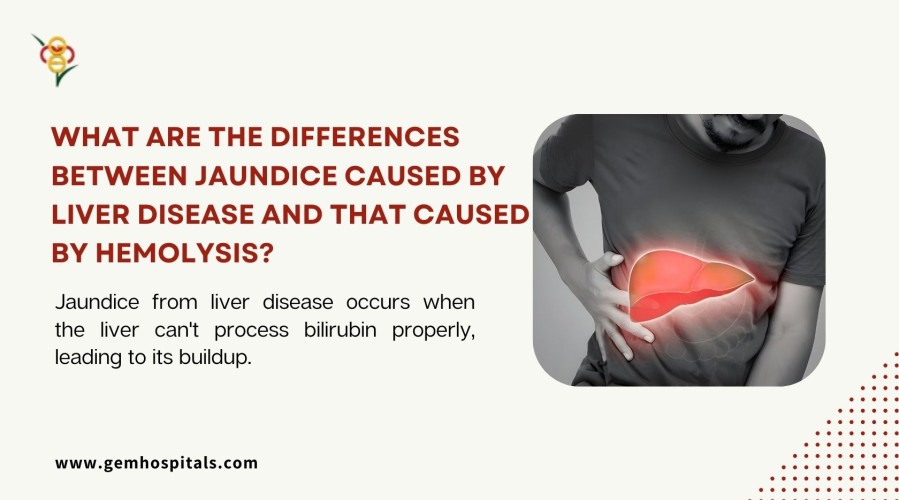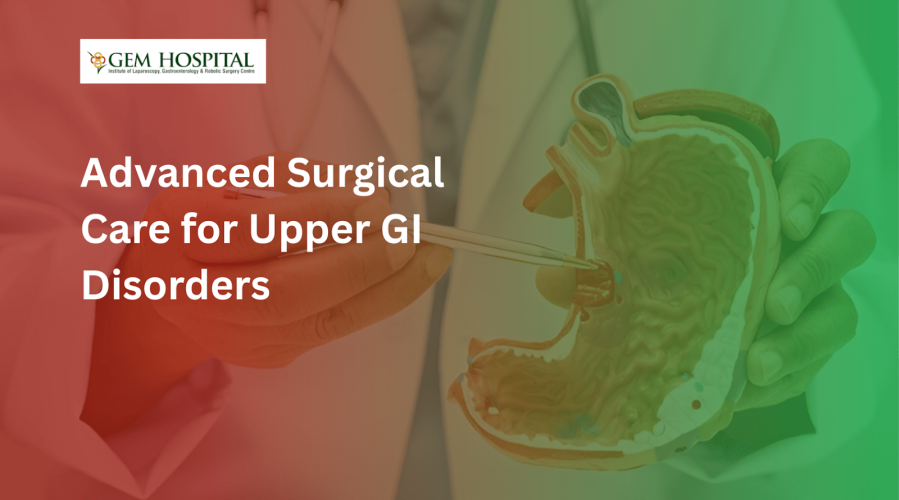Advanced surgical care for upper GI disorders including esophagus, stomach, and duodenal conditions. Learn about diagnosis, minimally invasive treatments, and expert surgical solutions.
What are the differences between jaundice caused by liver disease and that caused by hemolysis?

Jaundice is generally identified with the yellowing of skin and eyes, this is due to the buildup of bilirubin levels in the blood which is a result of the breakdown of red blood cells. Even though it is a normal function when the liver is not functioning well it cannot excrete it out of the body this is how the bilirubin accumulates in the body and leads to jaundice. The jaundice is caused in two ways one is due to liver diseases and another is hemolysis both of these conditions influence the metabolism of bilirubin but in different ways. In this case, understanding the difference between jaundice caused by liver disease which is caused by hemolysis is vital for accurate diagnosis and treatment. This blog going to explore the key differences between jaundice resulting from liver disease and hemolysis, stick to the content below,
Liver disease-related jaundice
Liver disease-related jaundice, also known as hepatocellular jaundice, occurs when the liver's ability to process and excrete bilirubin is impaired. The liver is the primary organ responsible for converting unconjugated (indirect) bilirubin into conjugated (direct) bilirubin, which is then excreted in bile. When liver cells are damaged, this process is interrupted, leading to the accumulation of both conjugated and unconjugated bilirubin in the blood.
Causes of liver disease-related jaundice
Several liver conditions can lead to jaundice, including, hepatitis, cirrhosis, liver cancer, alcoholic liver disease, and drug-induced liver injury.
Hemolysis-related jaundice
Hemolysis-related jaundice, also known as hemolytic jaundice, occurs when red blood cells break down at an accelerated rate, leading to an excessive release of hemoglobin. Hemoglobin is broken down into heme, which is then converted into unconjugated bilirubin. When the liver is overwhelmed by the increased production of unconjugated bilirubin, it is unable to process it all, resulting in jaundice.
Causes of hemolysis-related jaundice
Hemolytic jaundice is often caused by conditions that lead to the destruction of red blood cells, including, hemolytic anemia, autoimmune disorders, and medications and toxins.
Mechanism of hemolysis-related jaundice
In hemolytic jaundice, the liver is overwhelmed by the excess production of unconjugated bilirubin due to the rapid destruction of red blood cells. Since unconjugated bilirubin is not water-soluble, it cannot be excreted in urine, leading to its accumulation in the blood.
Unlike liver disease-related jaundice, where both unconjugated and conjugated bilirubin levels are elevated, hemolytic jaundice is characterized by a predominantly high level of unconjugated bilirubin.
Key differences between the two types of jaundice
These two types of jaundice can be distinguished by the below things,
Underlying cause
Liver disease-related jaundice results from impaired liver function, preventing proper bilirubin metabolism. In case of, hemolysis-related jaundice arises from the excessive breakdown of red blood cells, overwhelming the liver’s ability to process bilirubin.
Bilirubin type
In liver disease-related jaundice, both unconjugated and conjugated bilirubin are elevated and in the case of hemolytic jaundice, there is primarily an elevation of unconjugated bilirubin.
Symptoms
Liver disease-related jaundice often includes dark urine and pale stools due to impaired bile excretion and in the case of hemolysis-related jaundice may feature dark urine, but this is due to hemoglobin rather than bilirubin. Pallor and splenomegaly are also more common in hemolytic jaundice.
Diagnosis and treatment
Diagnosing the cause of jaundice requires a combination of blood tests, liver function tests, and imaging studies. A detailed medical history and physical examination can help distinguish between liver disease and hemolytic jaundice.
While jaundice can be easily identified with its visible symptoms, even though the underlying cause may differ they are characterized by the yellowing of skin and eyes. In general, jaundice is because by liver disease due to the excessive breakdown of red blood cells. Proper identification of the causes is crucial and helps in appropriate treatment and management. Choose the right doctor for proper diagnosis and treatment before putting your life under threat.
For early diagnosis or preventive care, consult the specialists at Gem Hospital.
Contact us today for expert guidance and personalized treatment options!
Blogs & Article
Learn about esophagogastric surgery, the conditions it treats, and the latest surgical options available for disorders of the esophagus and stomach, including minimally invasive procedures.
Learn about surgical treatment options for esophagus and stomach disorders, including advanced procedures, benefits, and when surgery is recommended for better digestive health.


